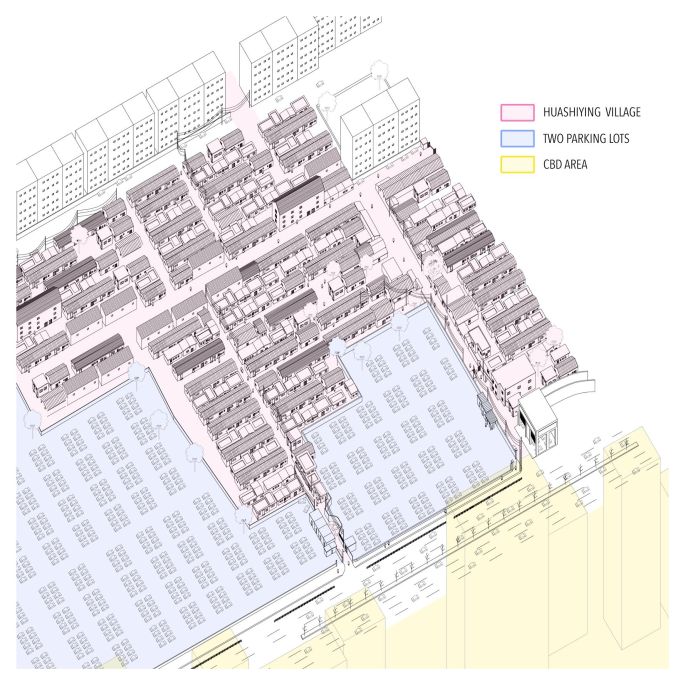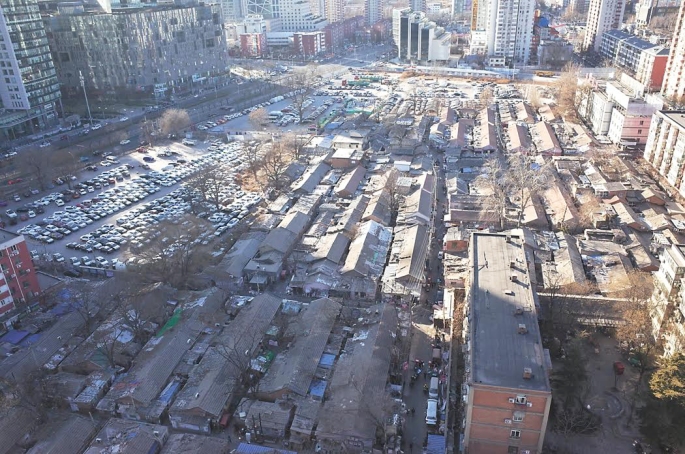“In the course of time every section and quarter of the city takes on something of the character and qualities of its inhabitants. Each separate part of the city is inevitably stained with the peculiar sentiments of its population. The effect of this is to convert what was at first a more geographical expression into a neighborhood, that is to say, a locality with sentiments, traditions, and a history of its own.”
—— The City by Robert E. Park and Ernest Burgess

In contemporary China, the rapid economic growth has created huge economic and social inequality between classes. Most migrant workers in China’s metropolises nowadays live in informal communities known as urban villages, or “urban slums”.
This research project examines how residents in Huashiying Village, one of the many urban villages in Beijing, use their wisdom and experiences to transform the limited and undesirable built environment into a spot for vibrant living.
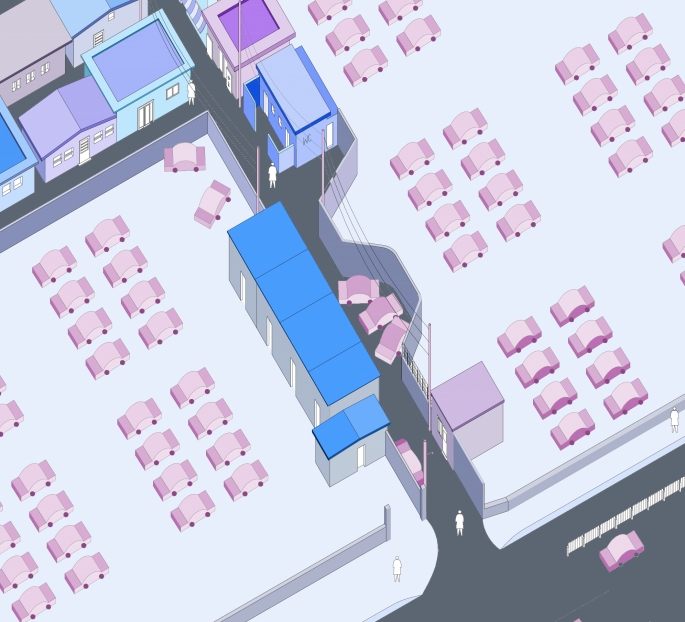
South Entrance I
This south entrance to Huashiying Village, surrounded by two giant parking lots, forms a narrow alley that leads to the core of the village. This entrance measures only two widths of a car. However, residents still effectively use the space by creating a curved wall that forms a concave-shaped space, where three cars can park simultaneously.
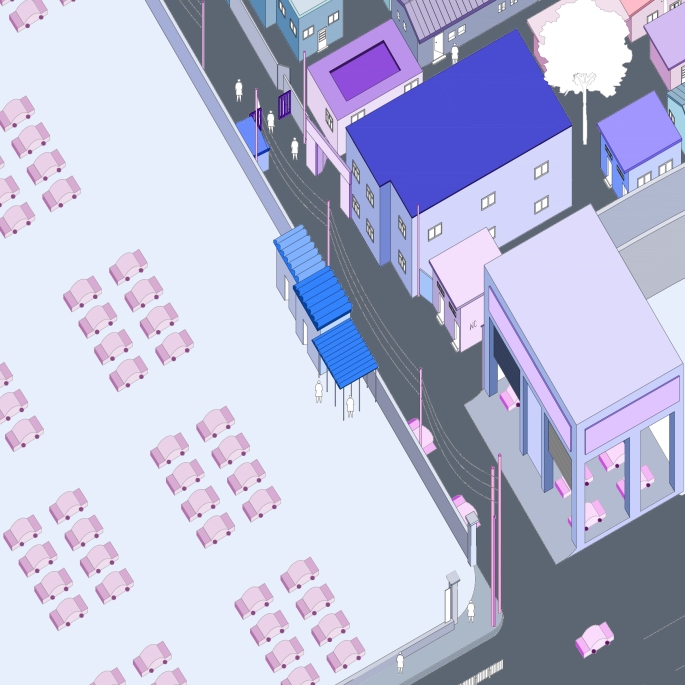
South Entrance II
Wider than the other south entrance, this entrance alley provides space for vendors and outdoor shops. Overtime it has evolved into a small outdoor market where residents can find all kinds of groceries and services: clothing, kitchen products, phone repair shops, as well as fruits vendors.

Mixed-use Grocery Store
Residential and commercial purposes are mixed in many houses in Huashiying Village. This grocery store exemplifies how local residents efficiently combine their personal life and their work together, in a space that is merely 130 square feet.
The left part of the house serves as the bedroom and storage space for the family, and the larger room on the right functions as a grocery store, also owned by the family. Circulations are separated as well: the family enters from the left side, and customers from the right side. The private and the public are simply one wall apart, and it is hard to tell the line between family’s personal life and their work.
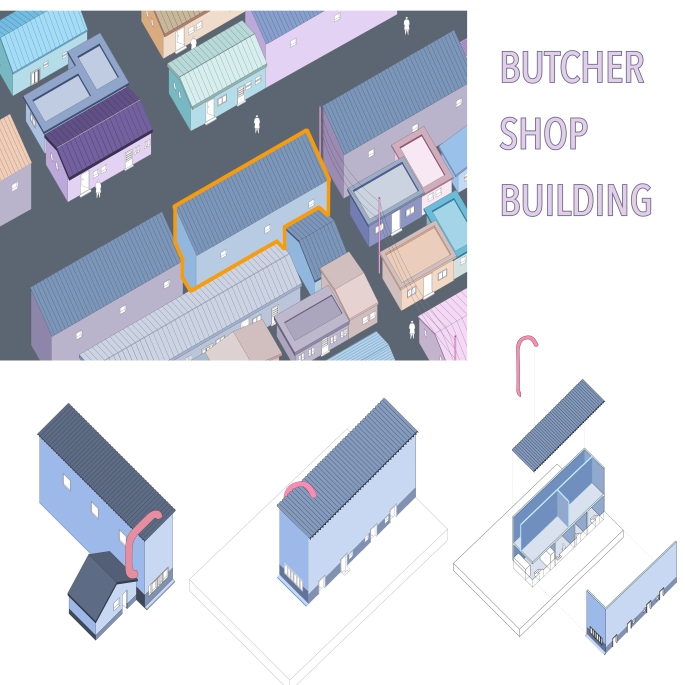
Butcher Shop Building
The residential building where this butcher shop is located has a downstairs space. While the second floor is for residential use, residents occupy the first floor to run small businesses. For this specific building, the butcher shop and two other small businesses are halfway buried beneath the ground, and stairs lead people down to the space inside.
Due to the interior-exterior level difference, windows of this butcher shop (about waist-high) are positioned lower than regular windows. Meat products are placed on a counter right below them, which allow local residents to purchase meat directly through the windows.
More On Huashiying Village
Huashiying Village is located in the south of Beijing’s Chaoyang District, which is one of the most prosperous districts in Beijing. This area also adjoins Beijing’s central business district, where a lot of well-known Chinese and international enterprises have established their headquarters, such as Motorola, HP, Samsung, Deutsche Bank and China Central Television. The yellow zone in the diagram marks out the CBD area which is right across the street. Standing closest to Huashiying Village is Chaowai SOHO, a retail and office mixed-use complex. Surrounded by high-rises and high value urban parks, Huashiying is usually described as the shanty neighborhood nestled in the shadow of modern Beijing.
Due to the large number of white-collar workers in this CBD area, there is high demands for parking lots. Huashiying is surrounded by two giant parking lots for people working in the CBD area nearby. Several apartment buildings stand behind the village. In contrast to the houses in Huashiying, these residential buildings provide better basic amenities(such as private bathrooms and garbage disposal system).
Huashiying Village was established in 1949 and the buildings were used as employee dormitories at first. There are still some original residents who have been living there for more than 60 years. When the first single-storey homes were built here, Huashiying was a village on the outskirts of Beijing. Today it’s a mostly wrecked urban neighborhood located in the center of Beijing, providing cheap housing to migrant workers. Like many of Beijing’s urban villages, Huashiying had been designated for redevelopment about twenty years ago, and relocation of residents had begun. 200 households at the south end of the neighborhood were fortunate enough to receive compensation and move out in the 1990s. Later the plan was suspended when Beijing’s former Party secretary, Chen Xitong was arrested and sentenced to prison for corruption in 1998.
